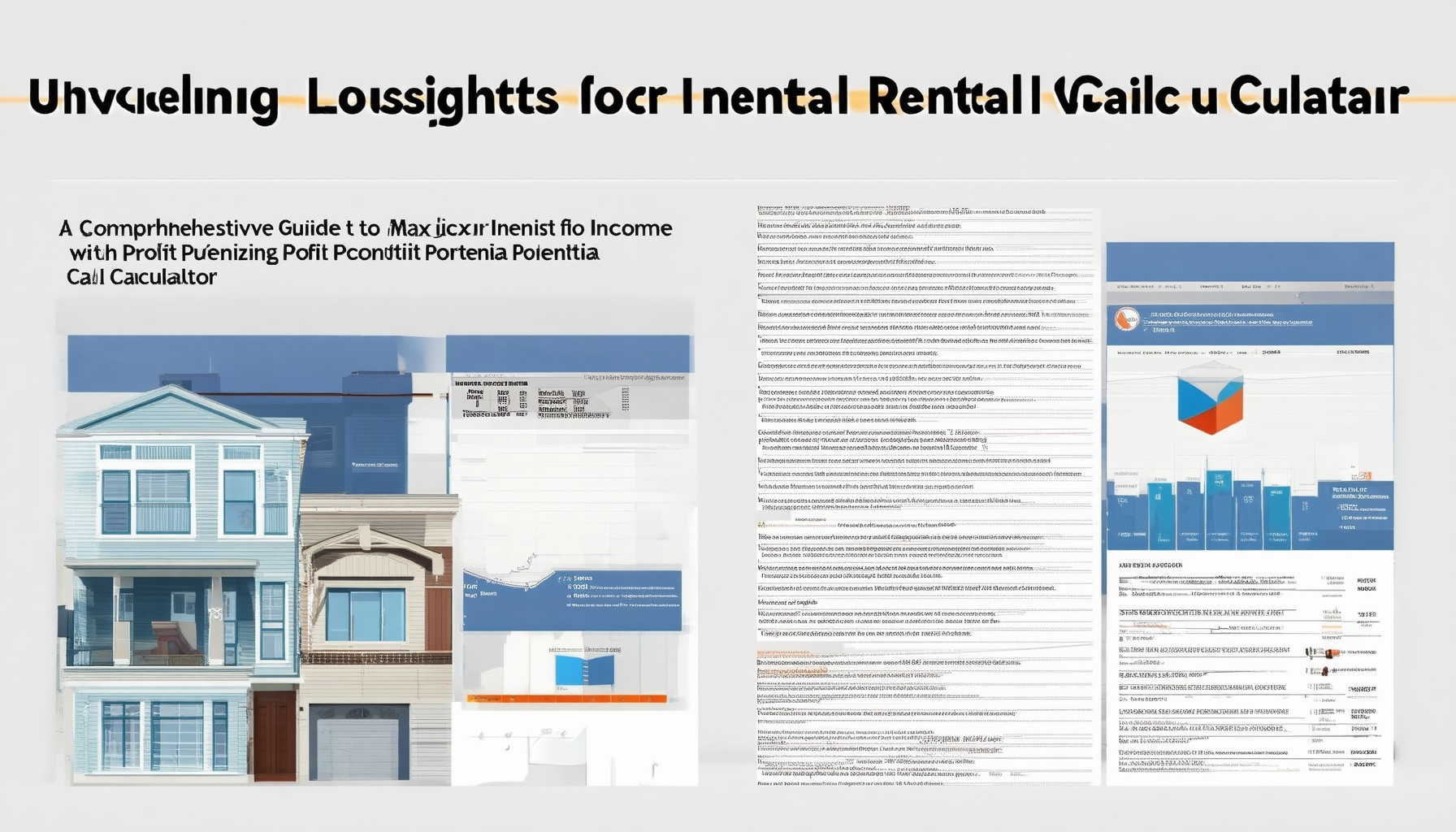Investing in rental properties can be both lucrative and challenging, with location playing a pivotal role in determining success. Understanding the nuances of location insights for rental income is essential for maximizing profit potential and minimizing risks. Whether you’re a seasoned investor or new to the game, pinpointing areas with high demand and stable returns requires careful analysis and the right tools. This comprehensive guide dives into the strategies and tools that can help you make informed decisions, leveraging location insights to optimize your rental income. From calculating potential earnings to navigating financial considerations, this guide equips you with actionable insights to thrive in the rental market.
Key Takeaways
- Evaluating Multiple Factors
Analyze local job markets, population growth, income levels, student populations, tourism trends, online listings, supply, and vacancy rates to accurately assess rental demand in your area.
- Optimizing Financial Metrics
Apply the 1% Rule, Gross Rent Multiplier (GRM), and 50/50 Rule to enhance your rental income calculations and evaluate investment potential effectively.
- Setting Competitive Rents
Establish fair and profitable rents by considering property value, location, market conditions, utilities, property management costs, lease terms, competition, pet policies, and clear rental agreements.

What is the 50% Rule in Rental Property?
The 50% rule, also known as the 50/50 rule, is a fundamental guideline used by real estate investors to evaluate the profitability of rental properties. According to this rule, no more than 50% of the gross rental income generated by a property should be allocated to operating expenses. This ensures that at least half of the income is retained as profit.
Why the 50% Rule Matters
- Expense Estimation: The rule helps landlords and investors accurately estimate potential profitability by ensuring they don’t underestimate expenses.
- Profitability Check: By reserving 50% of income for expenses, investors can determine if a property is generating a positive cash flow.
- Investment Strategy: The rule is often used to identify properties that may require additional capital to sustain operations.
How to Apply the 50% Rule
- Gross Rental Income: Calculate the total rent collected over a period, including all tenant payments.
- Operating Expenses: Identify and sum all costs associated with managing the property, such as utilities, maintenance, taxes, insurance, and management fees.
- Profit Calculation: Subtract the total operating expenses from the gross rental income. If the result is less than 50%, the property may not meet the rule’s criteria for profitability.
Example Calculation
Suppose a rental property generates $2,000 in gross monthly rent and has $800 in operating expenses:
- Gross Rental Income: $2,000
- Operating Expenses: $800
- Net Profit: $2,000 – $800 = $1,200
- Profit Percentage: ($1,200 / $2,000) * 100 = 60%
In this case, the profit percentage exceeds the 50% threshold, indicating the property meets the rule’s criteria.
Considerations
- Expenses can vary, so the rule should be applied consistently over time.
- Special considerations may apply for newer properties or those requiring significant repairs.
- Consult with a financial advisor to tailor the rule to individual circumstances.
By following the 50% rule, investors can make more informed decisions about which properties to acquire and manage effectively.
What is the 2% Rule in Rental Property?
The 2% rule is a fundamental guideline used by real estate investors to assess the potential profitability of rental properties. It suggests that rental income should ideally cover 2% of the property’s purchase price. Here’s a breakdown of how it works:
- Purchase Price : Calculate the total cost of the rental property, including all expenses like closing costs and repairs.
- Rent Amount : Determine the monthly rent charged to tenants. The rule aims for this rent to be at least 2% of the purchase price.
- Vacancy Rate : Account for periods when the property may be vacant, reducing the overall rental income.
By applying this rule, investors aim to ensure their rental property generates stable cash flow, helping them meet financial goals. The 2% rule is often used to screen potential investments and ensure they align with long-term financial strategies.
For more insights into rental property investment, explore our guides on market trends and investment strategies at Real Estate Locations .

The 80/20 Rule for Rental Property Explained
The 80/20 rule is a critical concept in rental property management that emphasizes focusing on the 20% of properties or tenants that generate 80% of the income or cause 80% of the issues. This principle helps landlords and property managers optimize their efforts and resources for maximum efficiency.
Key Aspects of the 80/20 Rule
- Rental Income Focus: Typically, 80% of rental income comes from 20% of the properties. This means prioritizing properties that consistently perform well and require less maintenance. Focus on properties with higher rent rates or lower vacancy rates.
- Tenant Issues: Often, 80% of tenant-related problems stem from 20% of tenants. Implement stricter tenant screening processes and lease agreements to minimize issues. Address tenant concerns promptly to reduce turnover and damage costs.
Strategic Implications
Understanding the 80/20 rule allows landlords to:
- Concentrate on high-performing properties for maximum revenue.
- Invest in better tenant screening and education to reduce turnover.
- Allocate resources effectively, such as maintenance and marketing, to the properties that need it most.
Actionable Steps
To apply the 80/20 rule effectively, consider the following:
- Track performance metrics for individual properties.
- Implement targeted marketing strategies for high-potential properties.
- Use data-driven insights to make maintenance and leasing decisions.
By leveraging the 80/20 rule, rental property owners can streamline operations, maximize profitability, and enhance tenant satisfaction. For more insights into optimizing your rental property portfolio, explore our rental property management guide and learn how to implement effective tenant screening tools.

How to Determine Rental Demand in Your Area
To determine rental demand in your area, consider the following steps:
- Analyze the Local Job Market : Examine employment rates and the presence of industries such as tech, healthcare, or education. High job growth indicates increased demand for rental housing.
- Assess Population Growth : Look at demographic data to understand migration patterns and birth rates. Rising population often boosts rental demand.
- Evaluate Income Levels : Review median income statistics to gauge affordability. Higher incomes may drive demand for premium rentals.
- Consider Student Populations : Check local university enrollments, as student demand fluctuates with the academic calendar.
- Monitor Tourism Trends : If your area attracts visitors, assess demand for short-term rentals, particularly during peak seasons.
- Inspect Online Listings : Use platforms like Craigslist or local rental sites to observe available units and rental rates over time.
- Examine Supply and Vacancy Rates : Obtain data from local housing authorities to understand the balance between supply and demand.
- Consult Local Experts : Reach out to real estate agents or property managers for insights into current market conditions and trends.
By systematically evaluating these factors, you can gain a comprehensive understanding of rental demand in your area.
Formula for Rental
The formula for calculating rental income and determining profitability involves several key components:
- The 1% Rule: A commonly used guideline for rental properties, it states that monthly rent should be at least 1% of the property’s purchase price. This helps determine the minimum rent needed to cover expenses.
- Gross Rent Multiplier (GRM): Calculated as the property’s sale price divided by annual gross rent, GRM helps evaluate investment potential. A higher GRM indicates better returns.
- 50/50 Rule: This rule splits operating expenses equally between rent and cost of ownership, helping landlords set fair rates and understand profitability.
To optimize rental income, consider these factors and utilize tools like Real Estate Locations for market analysis and investment strategies.

How Much Should I Charge for Rent?
Determining the appropriate rent amount involves several factors, including property value, location, market conditions, and additional expenses. Here’s a structured approach to help you set a competitive and fair rent:
- Base Rent Calculation: A common starting point is to charge 1% of the property’s assessed value. For example, a $300,000 property might rent for $3,000 per month. However, this is a general guideline and can vary based on local market dynamics.
- Location Considerations: Urban areas with high demand and limited supply often command higher rents compared to suburban or rural locations. Research comparable properties in your area to gauge the local rental rate.
- Utilities and Additional Fees: Decide whether to include utilities (water, electricity, garbage, etc.) in the rent. Offer flexibility by allowing tenants to opt in or out for these services.
- Property Management Costs: Factor in any fees for property management, maintenance, or repairs. Adjust the rent to cover these expenses, ensuring profitability while remaining competitive.
- Lease Terms and Security Deposits: Consider offering flexible lease terms to attract tenants. Check local regulations regarding security deposits to comply with legal requirements and protect your interests.
- Market Competition: Use online tools to monitor rental prices in your area. Set your rent competitive yet sufficient to cover all expenses, ensuring it aligns with local market rates.
- Pet Policies: If allowing pets, consider adding a pet fee to cover potential damages or additional cleaning costs. This can help offset any extra responsibilities.
- Rental Agreement Clarity: Draft a clear and comprehensive rental agreement that outlines all charges and terms. Use templates or legal resources to ensure accuracy and avoid future disputes.
By considering these factors, you can establish a rent amount that is both fair to tenants and sustainable for your investment. Regularly review market conditions and adjust your rent accordingly to stay competitive and compliant with local regulations.




0 Comments